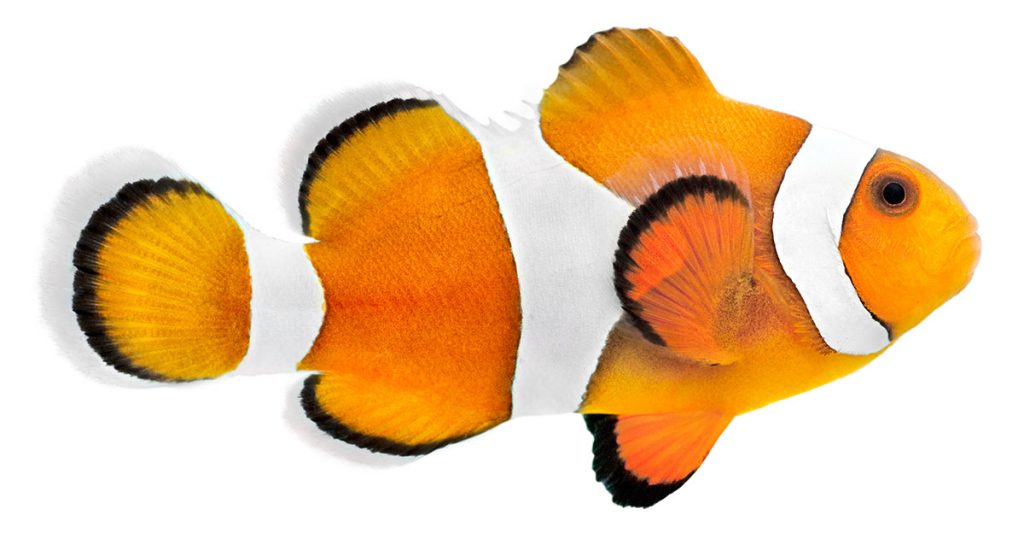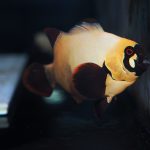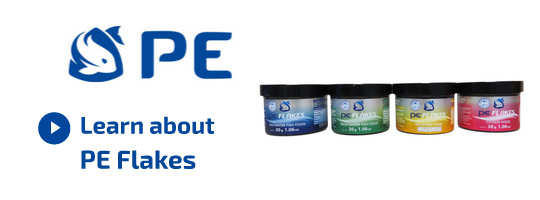Clownfish Species
Clownfish
Introduction
Clownfish, or Anemonefishes as they are sometimes called, are perhaps the most recognized species in the marine aquarium trade. Photos of bright orange clownfish hiding amongst the stinging tentacles of anemones have become the de facto representation of coral reefs, instantly recognized by people the world over. Luckily for aquarium keepers, they are also an ideal marine aquarium species and have become virtually domesticated in the last several decades. While the bright orange Ocellaris clownfish is most recognizable, there are many species of clownfish with a wide range of appearances. They can be found in colors ranging from yellow, orange, brown or black and they can have one, two, three or even no stripes! There seems to be a clownfish species for just about every type of saltwater tank!
Biology
One of the most unique aspects to clownfish biology is their ability to live within the stinging cells of anemones. Clownfish possess a special mucous coating that allows them to avoid being stung. Living within the tentacles of a stinging anemone has several advantages. The anemone provides protection for the clownfish from predators, as well as a safe place to lay their eggs. This mutualistic relationship is not one sided however! Clownfish will fiercely defend their host anemones from any perceived threat, in fact they have been known to charge out and attack scuba divers who have gotten to close!
Another very fascinating aspect of clownfish biology is their strategy for reproduction. They practice a reproductive strategy known as sequential protandrous hermaphroditism, in which fish are first transition from non-reproductive juvenile, to male and finally reproductive female!
Captive Care
Clownfish are in many ways the ideal marine aquarium fish. They are considered a very hardy, do not attain an overly large size, and require only a minimal territory.
In the wild clownfish consume primarily zooplankton such as copepods and Mysis sp.. They also will graze on the algae found growing at the base of their host anemone. It is important to replicate a balanced diet in captivity, and we suggest a diet based on PE Calanus and PE 1mm Saltwater Pellets.
Due to their nature of inhabiting anemones in the wild, many species of clownfish do not require a very large tank. However, it is important to consider carefully what species of clownfish may be best for you tank. While smaller species such as the Ocellaris clownfish (Amphiprion ocellaris) are suited to tanks as small as ten gallons, larger species such as the Clark’s clownfish (Amphiprion clarkia) may be better suited to a larger tank.
Please see the selection of clownfish species below to learn more about the individual needs of different species!
Suggested Piscine Energetics Products
We suggest a diet based on Piscine Energetics Frozen Mysis, Piscine Energetics Frozen Calanus, Piscine Energetics Pellets (1mm and 2mm) and Piscine Energetics Saltwater Flakes.
What people are saying about PE:
After feeding my seahorses your mysis for about 3 months; they are fat and happy!!! they give me baby seahorses (at least 300 ) each 14 days... So I'm very satisfied of your mysis.The frozen mysis is about 70 per cent of their diet.
Yvan Charbonneau Quebec
I am keeping these Indian mudskippers -- very cute -- about 3-4 inches long. I've been feeding them frozen bloodworm, and decided to try them on mysis. I feed them in a "shallows" in the 150 I have set up for them. The minute the mysis hit the water they were on it, frozen and all. They gorged until their little bellies were almost bursting. I have yet to see an aquatic creature that does not go absolutely nuts over PE Mysis.
David Lass Massachusetts
I picked up my Mysis today and they arrived wonderfully. All the fish I fed them to, absolutely devoured them. They are my Frontosas new favorite food. All my Discus ate them up eagerly...heads and all!! I want to thank you again for your excellent service and product.
Pierre Brenton Nova Scotia
I have a large saltwater aquarium (220 gallons) with very expensive fishes and invertebrates. I tried to feed them with your PE Mysis and they really went crazy about it. Since that time, some of my fishes refuse any other product I offer them!







